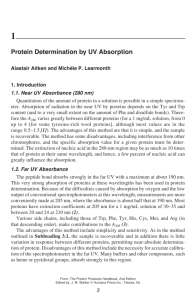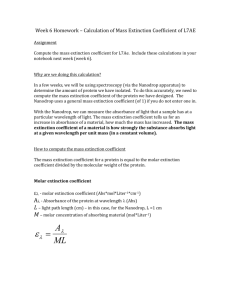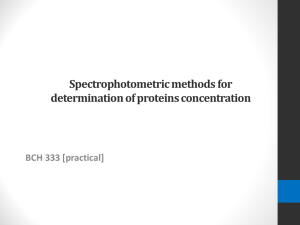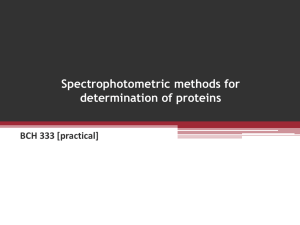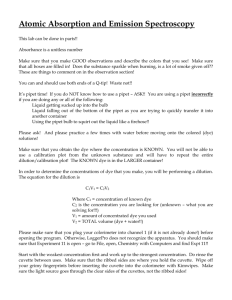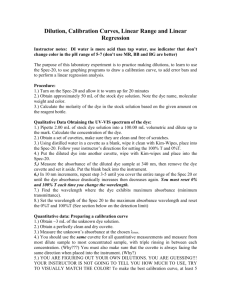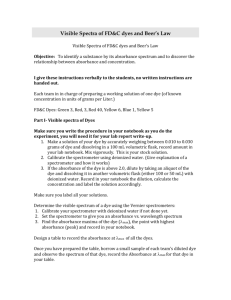Degree of Labeling Explanation
advertisement
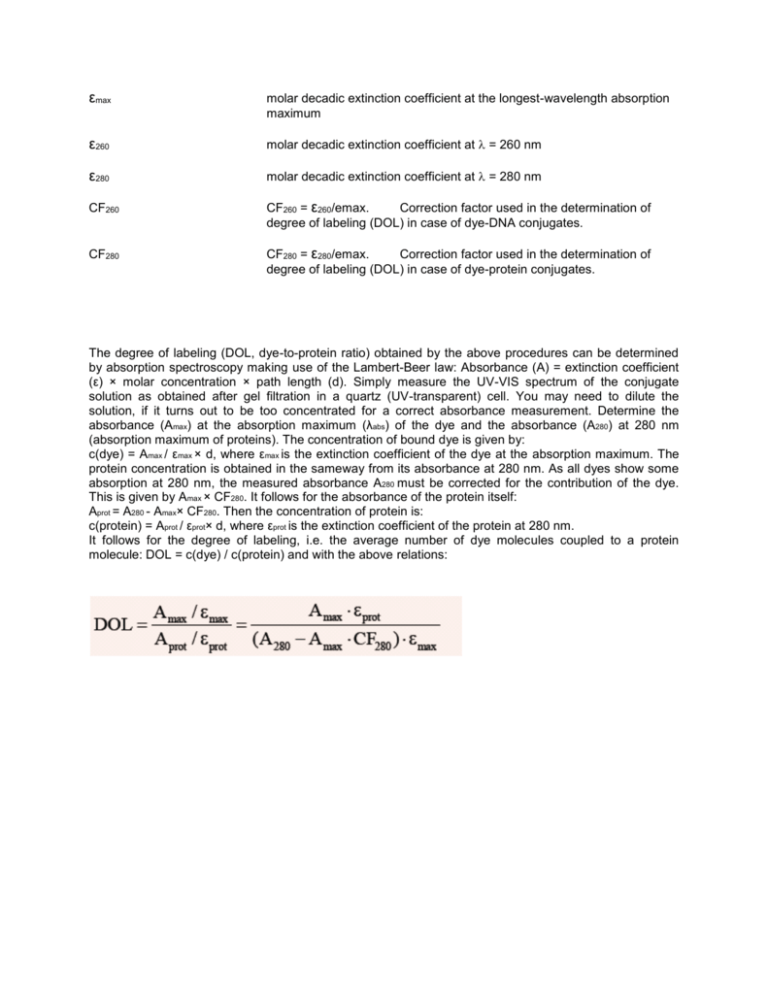
εmax molar decadic extinction coefficient at the longest-wavelength absorption maximum ε260 molar decadic extinction coefficient at = 260 nm ε280 molar decadic extinction coefficient at = 280 nm CF260 CF260 = ε260/emax. Correction factor used in the determination of degree of labeling (DOL) in case of dye-DNA conjugates. CF280 CF280 = ε280/emax. Correction factor used in the determination of degree of labeling (DOL) in case of dye-protein conjugates. The degree of labeling (DOL, dye-to-protein ratio) obtained by the above procedures can be determined by absorption spectroscopy making use of the Lambert-Beer law: Absorbance (A) = extinction coefficient (ε) × molar concentration × path length (d). Simply measure the UV-VIS spectrum of the conjugate solution as obtained after gel filtration in a quartz (UV-transparent) cell. You may need to dilute the solution, if it turns out to be too concentrated for a correct absorbance measurement. Determine the absorbance (Amax) at the absorption maximum (λabs) of the dye and the absorbance (A280) at 280 nm (absorption maximum of proteins). The concentration of bound dye is given by: c(dye) = Amax / εmax × d, where εmax is the extinction coefficient of the dye at the absorption maximum. The protein concentration is obtained in the sameway from its absorbance at 280 nm. As all dyes show some absorption at 280 nm, the measured absorbance A280 must be corrected for the contribution of the dye. This is given by Amax × CF280. It follows for the absorbance of the protein itself: Aprot = A280 - Amax× CF280. Then the concentration of protein is: c(protein) = Aprot / εprot× d, where εprot is the extinction coefficient of the protein at 280 nm. It follows for the degree of labeling, i.e. the average number of dye molecules coupled to a protein molecule: DOL = c(dye) / c(protein) and with the above relations:


